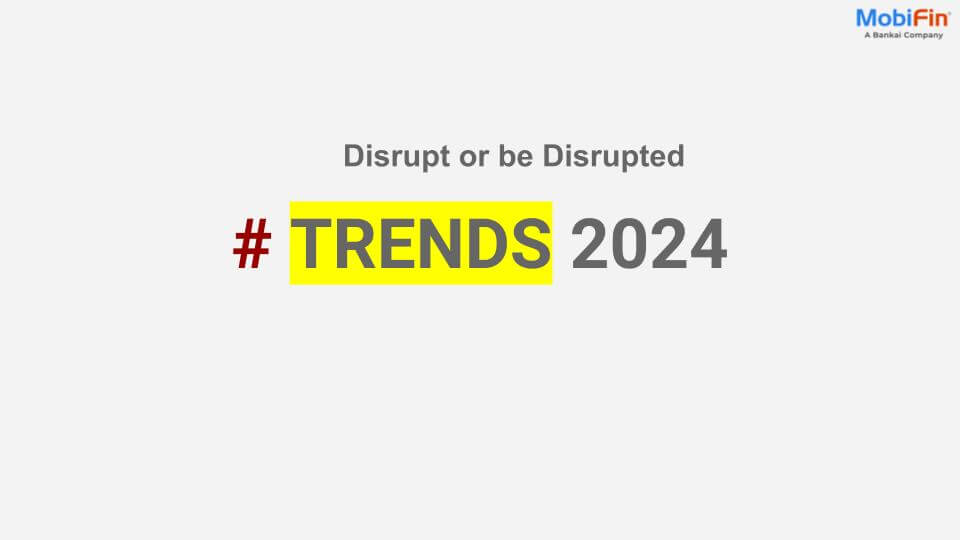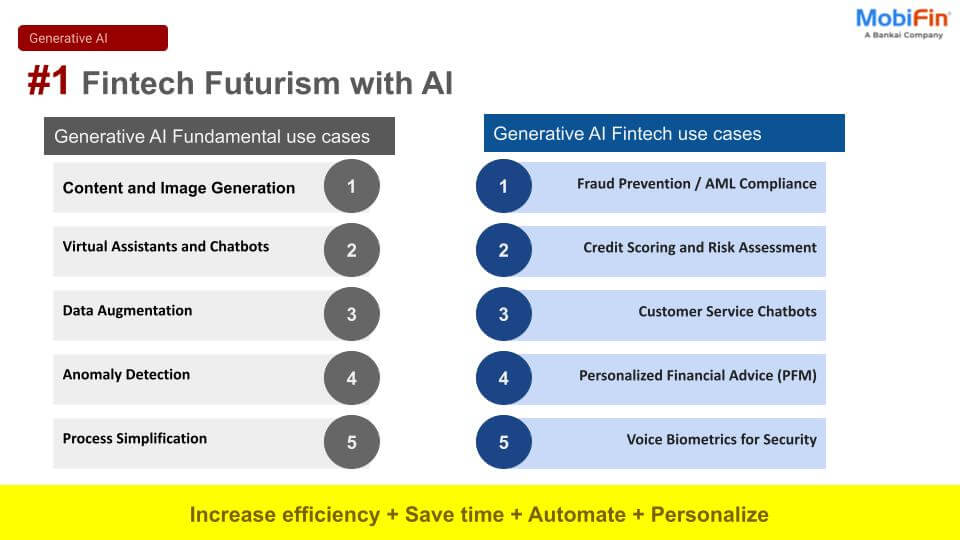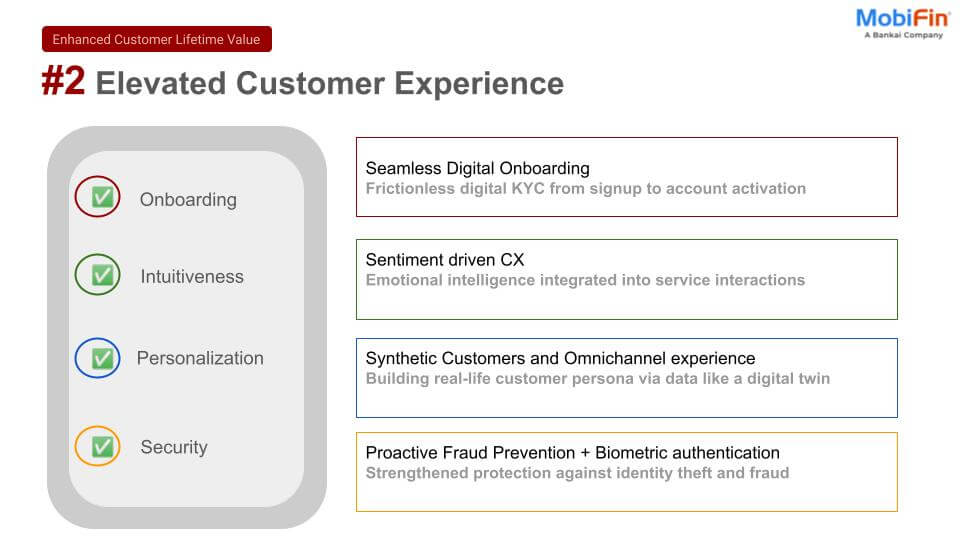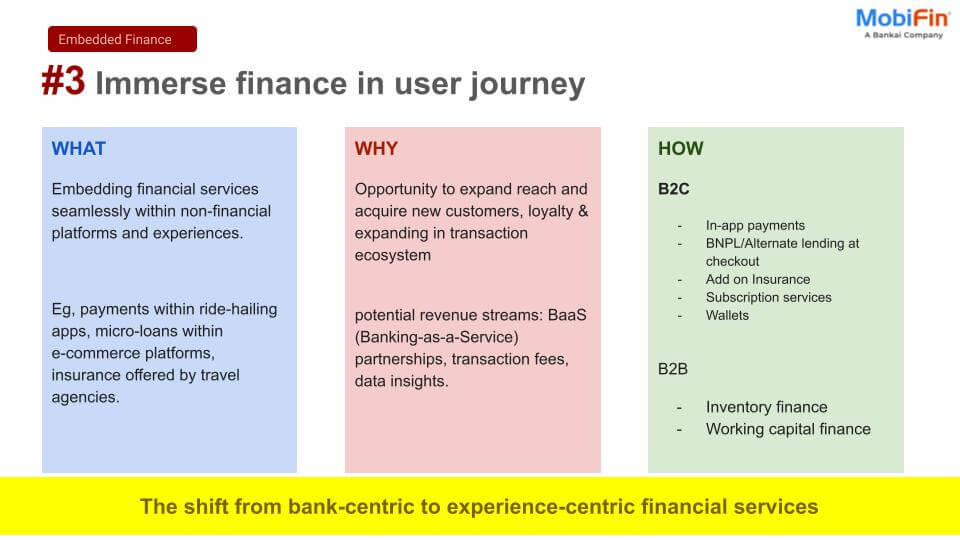The lending industry is undergoing a major transformation, driven by the rise of digital-first borrowers who demand instant approvals, personalized credit offerings, and seamless omnichannel experiences. Legacy lending systems often cause delays, manual errors, and higher risks of fraud, intensifying the pressure on lenders. Digital lending transformation is no longer optional but essential for staying competitive. By embracing the right technologies, processes, and partnerships, institutions can achieve scalable growth, advance financial inclusion, and ensure resilient compliance.
10 Best Practices for Digital Lending Transformation
To stay ahead in today’s dynamic financial ecosystem, lenders must go beyond digitizing existing processes and adopt a future-forward approach. This requires aligning technology, processes, people, and strategy to deliver measurable outcomes. The following best practices provide a roadmap for building future-ready digital lending models.
1. Understand borrower intent at the outset with frictionless inquiry
A lead management system should efficiently qualify and convert more borrowers so that customers have a smooth start to their borrowing journey.
2. Utilize intelligent automation to simplify user onboarding
AI-powered tools like Optical Character Recognition (OCR), liveliness and deepfake checks, eKYC, and sanction screening streamline onboarding, reduce fraud risks, and lower operational costs.
3. Make underwriting smarter and faster
AI-driven analytics improve credit decisioning by automating risk evaluation, delivering faster approvals and more consistent portfolio quality. By integrating alternative data sources such as transaction history, utility payments, or social signals, lenders can expand credit access while maintaining strong risk controls.
4. Streamline documentation with advanced AI tools
NLP-powered document processing and auto-drafting reduce manual errors, speed up compliance, and ensure audit readiness. Financial institutions can enable interactive AI chats to reference files and generate comprehensive documentation.
5. Deliver hassle-free disbursement and clear closure processes
Banks should maintain clear documentation for borrower KYC, loan disbursement, repayment, and fee processing. They should ensure borrowers’ smooth access to funds and set transparent closure processes.
6. Elevate loan servicing with omnichannel support
AI virtual agents can provide 24/7 support, real-time updates, and assistance with eligibility checks and documentation. Banks should strive for early issue resolution and recovery support to establish long-term trust with the borrowers.
7. Drive strategic decisions with advanced analytics
The platform should offer predictive insights and real-time reports so that lenders can identify risks early and optimize their strategies. Advanced analytics help in spotting emerging borrower trends, enabling proactive product innovation and portfolio diversification.
8. Scale operations with cloud-ready, API-first architecture
The loan management system should use Oracle Cloud Infrastructure (OCI) hosting, API-first design, and multi-product workflows for quick go-to market. This architecture ensures flexibility and scalability, allowing lenders to integrate new partners and services without heavy re-engineering.
9. Expand with multi-party & co-lending models
As a best practice, borrowers should get a diverse range of lending options. So, lenders should adopt platforms with third-party aggregators and co-lending capabilities. These functionalities can further help financial institutions in funding large projects.
10. Take the help of managed services
Managed services help in delivering strategic, preventive, and transparent IT solutions with hosted infrastructure optimization. They offer 24/7 monitoring with uninterrupted operations. Consequently, the internal teams can focus on driving innovations rather than the redundant tasks.
Strategic Benefits for Decision Makers
Adopting digital lending best practices is not only about operational efficiency but also about ensuring long-term business value. For decision makers, the real impact lies in improved agility, stronger governance, and enhanced customer trust: the key drivers that shape competitiveness in the digital lending ecosystem.
Utilizing these best practices has several strategic advantages for financial institutions, as discussed below:
Speed-to-market advantage
A digital-first lending platform enables institutions to roll out new credit products like BNPL, SME loans, and microcredit in weeks rather than months. Automated workflows, API integrations, and cloud-ready infrastructure reduce dependence on legacy IT cycles, ensuring lenders capture market share before competitors.
Improved compliance & fraud control
As every borrower is screened instantly and continuously, it reduces the likelihood of fraud. This becomes even more important as regulations are tightening worldwide.
Scalable lending across markets
Loan origination and management systems like MobiFin are designed to grow with the institution. Multi-product workflows, API-first integration, and cloud hosting allow lenders to expand into new geographies or borrower segments without any system re-engineering. From microfinance in rural areas to corporate loans in urban hubs, scalability ensures sustainable growth.
Enhanced borrower experience
Digital lending ensures instant approvals, transparent loan terms, flexible repayment options, and real-time notifications. It will attract new borrowers and reduce churn.
Operational efficiency
Manual underwriting used in traditional lending often leads to errors and high costs. Digital workflows, on the other hand, automate everything from document verification to repayment scheduling, bringing stronger ROI.
Conclusion
As digital lending takes rapid strides, financial institutions must balance innovation with compliance, scale, and customer trust. The shift to digital-first operations is not just about adopting technology but about reimagining every borrower interaction for speed, transparency, and resilience.
Financial institutions that adopt digital lending best practices stand out from competitors and create a lasting impact on borrowers and stakeholders. The significance of these practices is underscored by the digital lending market’s projected growth to USD 795.34 billion by 2029. At MobiFin, we enable financial institutions to turn these best practices into real-world outcomes with our secure, scalable, and compliance-ready digital lending platform.
Book a demo today to accelerate lending innovation, delight borrowers, and stay ahead in 2025 and beyond.













